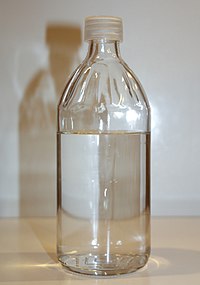
Freestanding carbon aerogels produced from bacterial cellulose and its Ni/MnO2/Ni(OH)2 decoration for supercapacitor electrodes
Sign Up to like & getrecommendations! Published in 2018 at "Journal of Applied Electrochemistry"
DOI: 10.1007/s10800-018-1183-5
Abstract: Bacterial cellulose (BC) was used as a raw material to produce freestanding carbon aerogels (CAs). The CAs were further decorated with Ni and MnO2/Ni(OH)2 hybrid via electrodeposition and redox reaction to produce carbon nanofiber networks… read more here.
Keywords: freestanding carbon; bacterial cellulose; supercapacitor electrodes; carbon aerogels ... See more keywords

Polypyrrole/titania-coated cotton fabrics for flexible supercapacitor electrodes
Sign Up to like & getrecommendations! Published in 2018 at "Applied Surface Science"
DOI: 10.1016/j.apsusc.2017.12.128
Abstract: Abstract Flexible and wearable supercapacitors are mostly desired with the fast development of wearable electronics in recent years. Herein, polypyrrole (PPy)/titania (TiO2)-coated cotton fabrics as flexible supercapacitor electrodes were prepared using both the sol-gel approach… read more here.
Keywords: fabrics flexible; flexible supercapacitor; titania; supercapacitor electrodes ... See more keywords

Probing the electrolyte infiltration behaviour of activated carbon supercapacitor electrodes by in situ neutron scattering using aqueous NaCl as electrolyte
Sign Up to like & getrecommendations! Published in 2018 at "Carbon"
DOI: 10.1016/j.carbon.2018.04.072
Abstract: Abstract In situ contrast-matched neutron scattering was used to probe the electrolyte infiltration behavior of activated supercapacitor carbon electrodes using an aquoeus 1 M NaCl solution. It was found that only about 20% of the pore… read more here.
Keywords: carbon; infiltration; neutron scattering; supercapacitor electrodes ... See more keywords

Graphene aided gelation of MXene with oxidation protected surface for supercapacitor electrodes with excellent gravimetric performance
Sign Up to like & getrecommendations! Published in 2020 at "Carbon"
DOI: 10.1016/j.carbon.2020.07.041
Abstract: Abstract Gravimetric and volumetric capacitance are the two important matrices for any supercapacitor device, but only moderate achievement has been realized till date on the first figure-of-merit for MXene based electrodes. In this study, aided… read more here.
Keywords: gelation; excellent gravimetric; mxene; graphene ... See more keywords

Flexible polypyrrole/copper sulfide/bacterial cellulose nanofibrous composite membranes as supercapacitor electrodes.
Sign Up to like & getrecommendations! Published in 2017 at "Carbohydrate polymers"
DOI: 10.1016/j.carbpol.2016.10.004
Abstract: Polypyrrole (PPy) and copper sulfide (CuS) have been successfully deposited on bacterial cellulose (BC) membranes to prepare nanofibrous composite electrodes of PPy/CuS/BC for flexible supercapacitor applications. The introduction of CuS remarkably improves the specific capacitance… read more here.
Keywords: composite membranes; copper sulfide; bacterial cellulose; supercapacitor electrodes ... See more keywords

Synthesis of self-templated urchin-like Ni2Co(CO3)2(OH)2 hollow microspheres for high-performance hybrid supercapacitor electrodes
Sign Up to like & getrecommendations! Published in 2019 at "Electrochimica Acta"
DOI: 10.1016/j.electacta.2019.134970
Abstract: Abstract Developing novel nanostructures is always the most decisive aspect for high-performance supercapacitor electrodes. Thus, a facile one-step and self-templated method is successfully developed for the fabrication of urchin-like Ni2Co(CO3)2(OH)2 hollow microspheres (NiCoHSs) as a… read more here.
Keywords: self templated; performance hybrid; supercapacitor electrodes; performance ... See more keywords

Electrophoretic deposition of binder-free TiN nanoparticles to design 3D microstructures. The role of sintering in the microstructural robustness of supercapacitor electrodes
Sign Up to like & getrecommendations! Published in 2021 at "Electrochimica Acta"
DOI: 10.1016/j.electacta.2020.137654
Abstract: Abstract TiN is herein used as an example to elucidate that a sintering treatment should be considered as a relevant variable to discuss charge storage mechanisms, charge transfer resistances and others important electrochemical aspects of… read more here.
Keywords: binder free; free tin; tin; supercapacitor electrodes ... See more keywords

Directly grown carbon nano-fibers on nickel foam as binder-free long-lasting supercapacitor electrodes
Sign Up to like & getrecommendations! Published in 2019 at "Materials Chemistry and Physics"
DOI: 10.1016/j.matchemphys.2018.11.024
Abstract: Abstract Binder-free carbon nanofiber (CNF) electrodes are prepared using a facile one-step process on nickel foam (Ni-f). The amalgamation of the innate Ni-f pores and nanostructure caused by the growth of the CNF is found… read more here.
Keywords: supercapacitor electrodes; nickel foam; carbon; capacitance ... See more keywords

Ag/Biochar composite for supercapacitor electrodes
Sign Up to like & getrecommendations! Published in 2017 at "Materials Today Energy"
DOI: 10.1016/j.mtener.2017.09.002
Abstract: Abstract A new composite material was obtained using a simple activation process of biochar (BC) and high performance supercapacitor (SC) electrodes were fabricated. BC was attained by carbonization of infested ash tree residue at 700 °C… read more here.
Keywords: electrodes fabricated; composite supercapacitor; based electrodes; supercapacitor electrodes ... See more keywords

Hybrid nanomanufacturing of mixed-dimensional manganese oxide/graphene aerogel macroporous hierarchy for ultralight efficient supercapacitor electrodes in self-powered ubiquitous nanosystems
Sign Up to like & getrecommendations! Published in 2019 at "Nano Energy"
DOI: 10.1016/j.nanoen.2019.104124
Abstract: Abstract The economic production of wearable energy storage devices exhibiting mechanically-compliable form factors and reliable performance enable exciting opportunities in emerging technologies of consumer electronics, human-machine interface, and the Internet of Things. Here we report… read more here.
Keywords: graphene aerogel; energy; mixed dimensional; supercapacitor electrodes ... See more keywords

Multidimensional performance optimization of conducting polymer-based supercapacitor electrodes
Sign Up to like & getrecommendations! Published in 2017 at "Sustainable Energy and Fuels"
DOI: 10.1039/c7se00339k
Abstract: Supercapacitors based on conducting polymers promise to bridge the gap between the high power densities of carbon-based double-layer capacitors and the high energy densities of batteries. While much work has focused on improving the specific… read more here.
Keywords: conducting polymer; polymer based; supercapacitor electrodes; performance ... See more keywords